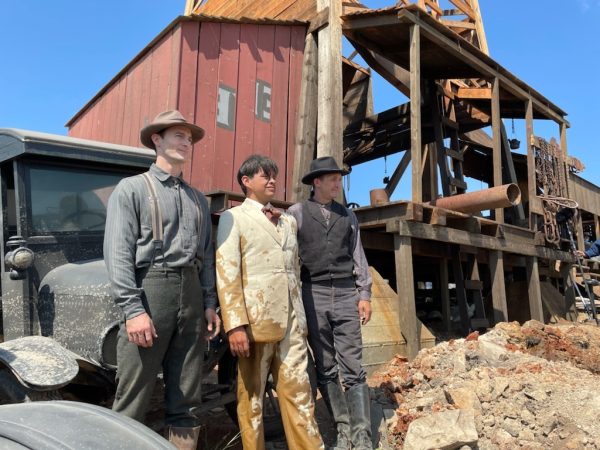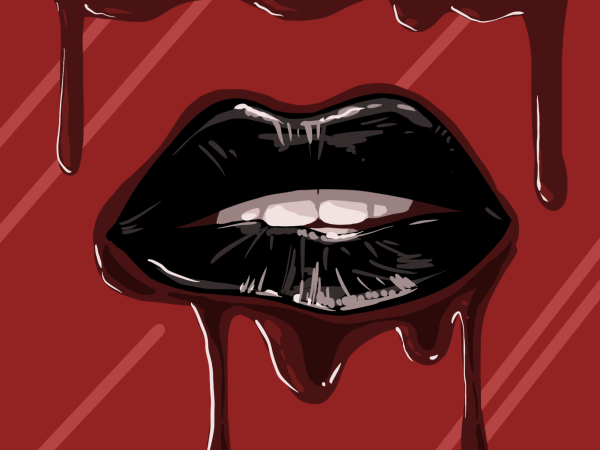Terrifying and fascinating, ‘IT’ doesn’t belong in The Loser’s Club

Horror is one of the oldest genres in storytelling. Whether it be the grisly sight of Beowulf’s mother, the flap of leathery wings signaling Dracula, or the tattooed knuckles of the Reverend Harry Powell, the horror genre almost universally revolves around a single aspect: the villain.
Fortunately for “IT,” the latest Stephen King novel to hit the silver screen, the presence of a strong and singular villain combined with a stellar young cast, lifts the film above its inconsistent tendencies.
“IT” follows a summer in the life of The Loser’s Club, a ragtag group of teens bound by their common interests and involuntary social exile. Set in the 80’s in Derry, Maine, kids mysteriously began to go missing. Enter Pennywise. We are introduced to Pennywise almost immediately, solidifying his (its?) unmistakable presence before the opening title card.
Portrayed by Bill Skarsgård, Pennywise is equal parts terrifying and fascinating. The horror genre’s longevity has been cemented by its ability to personify the ethereal element of fear, and Pennywise enters that hall of horrors with his striking and nightmarish depiction. Skarsgård brings physicality to the role, defining Pennywise’s presence on the screen.
His voice slithers into the ear from a drooling mouth; a crooked smile outlines a twisted thread of teeth; the chalk-white head peeks out from behind a bright red balloon. Images Director Andy Muschietti’s depictions of Pennywise while he’s terrorizing The Loser’s Club are hellish, and Muschietti’s interesting use of focus during longer takes distorts Pennywise into something otherworldly.
All of this, however, would be in vein if the cast of young actors composing The Loser’s Club weren’t equally as effective. Led by an intrepid Bill (newcomer Jaden Libenher), whose little brother Georgie has gone missing, The Loser’s Club is full of the high school cliché misfits one would expect to find in a movie, but the script does a nice job of developing each character and giving them a villain other than the dreadful Pennywise. It’s important to remember that in Stephen King’s universe, adults are just as evil as the monsters he creates.
For each member of The Loser’s Club, there is an equally horrifying adult (or bully) tormenting them, providing real-world conflict to juxtapose Pennywise’s supernatural terror. While I didn’t necessarily “buy” every relationship that developed within The Loser’s Club, the overall effect was strong enough for me to feel invested in the characters.
Finn Wolfhard, who plays Richie, a fast-talking and sarcastic nerd, steals almost every scene he’s in with a comedic timing and delivery verging on preternatural. This balancing of humor and horror is the film’s strongest aspect, with scenes rubber-banding from humor to terror and back to humor again almost effortlessly. It’s no easy task to scare your audience as much as you make them laugh, but “IT” proves successful in this juncture.
Yet, for all its strengths, the film features many maddening inconsistencies too. Two scenes in particular are awkward and verge into the territory of parody. Dialogue waivers from oddly poignant to stilted and clumsy. The CGI work is effortless in one scene and obviously artificial in the next. Plus, the mythology surrounding Pennywise was non-existent. I had so many questions about the logistics of Pennywise’s patterns and his back-story that the movie never fleshed out. Granted, this may be addressed in the sequel — the current plan is a duology that nicely splits up the 1,000-page book — but my lingering questions bothered me during this film.
Pennywise is fascinating, and some of his appeal comes from his singular emphasis on evil — much like The Joker — but even The Dark Knight’s Joker had an ostensible motivation. Despite these missteps, much of what makes Stephen King’s body of work special — the primal horror, the exploration of adolescence, examining the critical time in a young person’s life when adulthood becomes terminal — is present in “IT.” And fortunately for us, the film effectively furthers the conversation about the unimaginable terror of growing up.

Madeline Deabler was the advertising manager for The Sunflower. Deabler double majored in journalism and graphic design. Originally from Omaha, Nebraska,...












